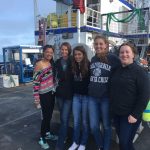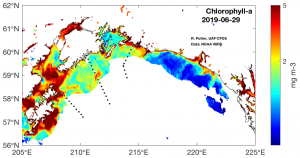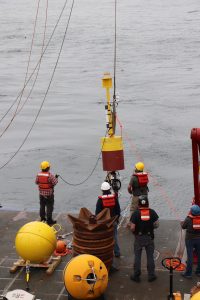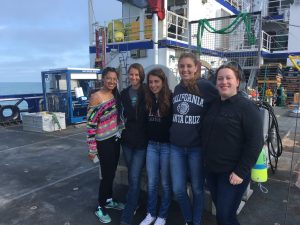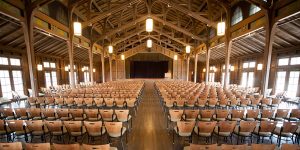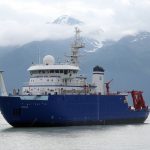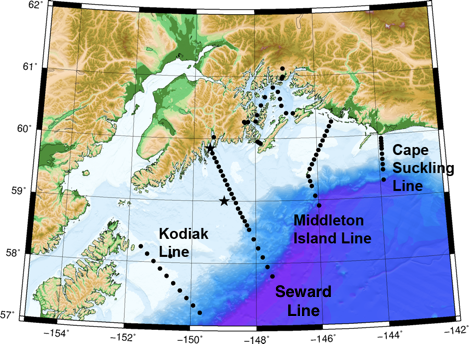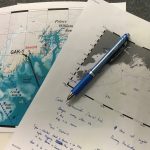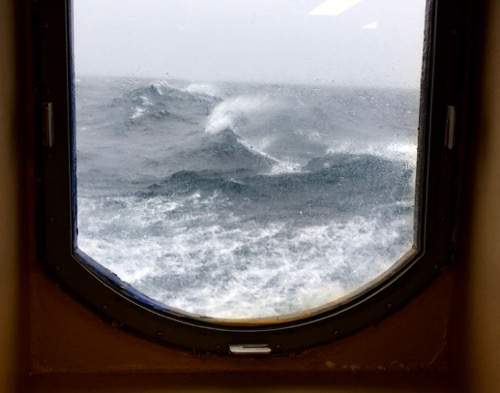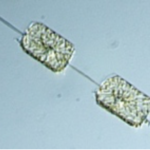
Massive, early spring bloom in the northern Gulf of Alaska, April-May 2021
Satellite measurements
Some of the highest chlorophyll concentrations recorded during the 24-year occupation of the Seward Line were seen in late April – early May 2021, in association with a massive spring bloom of diatoms. As an illustration, satellite imagery from NASA’s VIIRS (Visible Infrared Imaging Radiometer Suite) shows the bloom developing rapidly between April 18th and 25th.
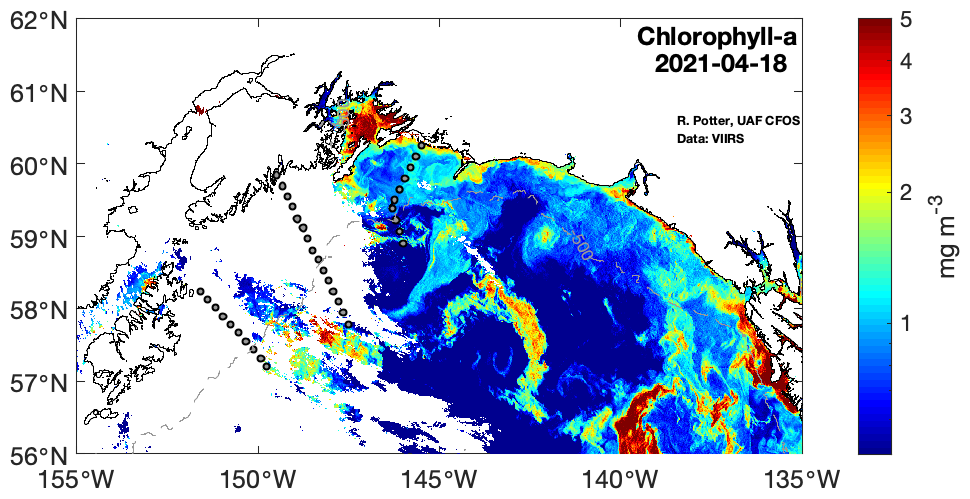
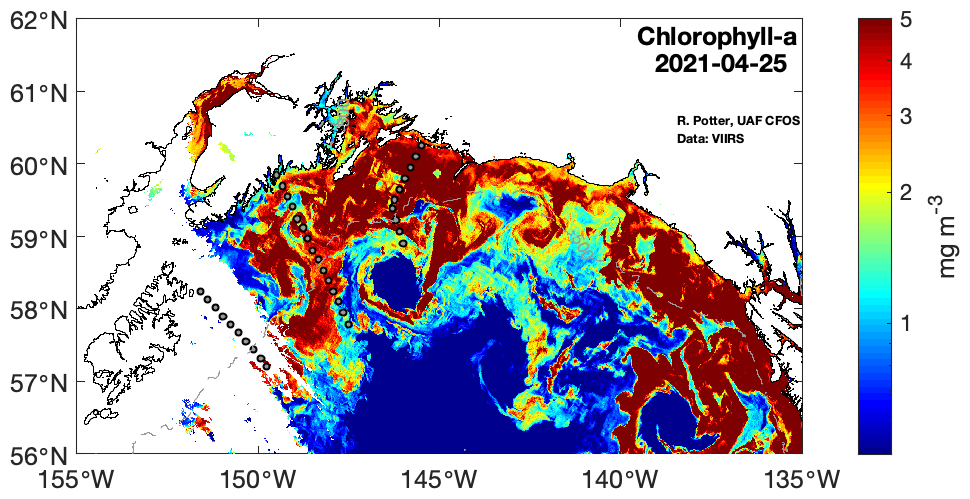
Field sampling provided details
Our field sampling from R/V Sikuliaq coincided with this bloom. We found relatively cool ocean temperatures and, in places, fresher conditions than usual, as shown below for the GAK line. High chlorophyll was mostly confined to the upper 20 m of the water column (as seen in the fluorescence section below). Likely, this bloom was a response to intermittent sunny days and light winds. Late April chlorophyll-a concentrations reached almost 30 μg liter-1 on the inner MID line. In contrast, in some springs the peak concentrations are only one-tenth this level. Surface macronutrients (nitrate and silicic acid) had been drawn down to levels usually observed in summer (<1 μM liter-1).
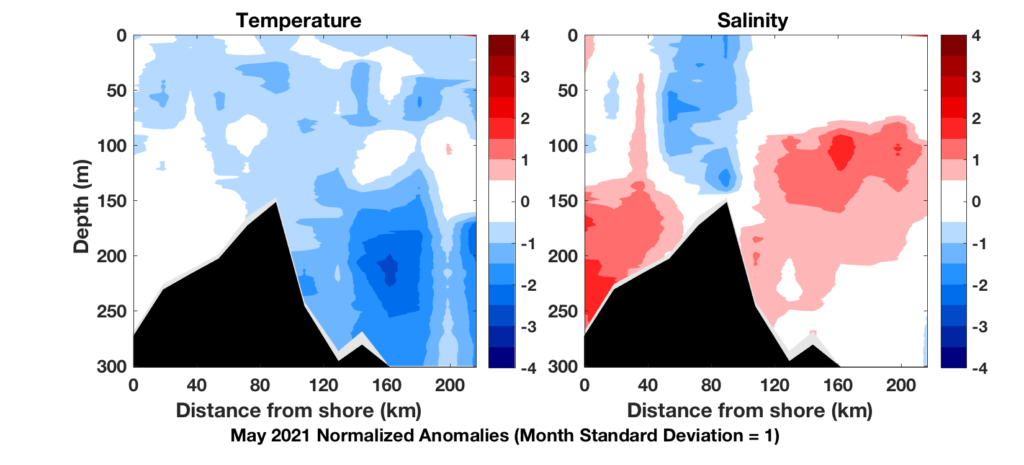
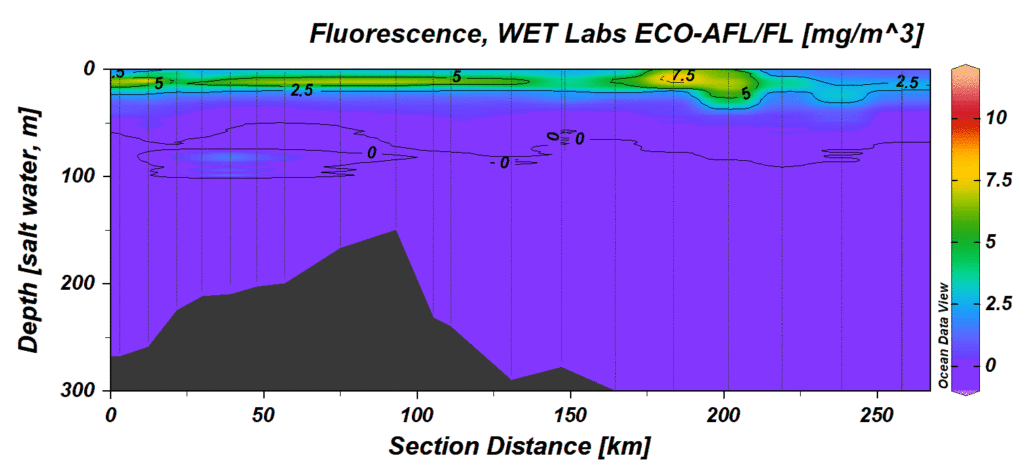
Microscopy conducted on board showed a diverse mixture of chain diatoms and colonial Phaeocystis comprising the bloom phytoplankton community. Concurrently, late-stage juveniles of the spring dominant Neocalanus copepod community had large amounts of lipid stores. At some stations, these copepods were already beginning their seasonal descent to deep diapause depths. Conversely, seabird abundances were some of the lowest ever observed during the >20-year time series, and few marine mammals were sighted.
The early, intense bloom of large, lipid-rich phytoplankton bodes well for survival and growth of krill and larval fish in 2021.

For further information contact Russ Hopcroft (rrhopcroft@alaska.edu) or Suzanne Strom (stroms@wwu.edu)

